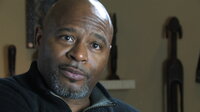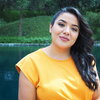
This comparative/thematic field seeks to convey a broad understanding of major issues and contemporary debates about race and racism, ethnic identity formation, and hybridity. The field not only encompasses conflict, oppression, and resistance, but also co-operation and symbiosis between groups defined by others or self-defined as racially or ethnically distinct. Courses in this field usually have at least two components: engagement with the theoretical literature on the history of racial ideologies and an introduction to the monographic literature in specific geographical and chronological fields of history. As the rubric given to this field suggests, major topics include race and racial oppression, the formation of racial or ethnic group identities, and the interactions between groups defined as racially or ethnically different.
Race and Racial Oppression
A major task here is to discuss the periods, stages and processes by which various states and other entities have subjugated peoples, ethnicities, and nationalities whom they defined as biologically or culturally inferior. Both the institutions and practices of dealing with racialized others and the mentalities, discourses, and ideologies of racial and ethnic distinctiveness and superiority need to be problematized. What technologies of social control--physical, juridical, economic, social and psychological--were employed by slaveholding regimes to maintain and rationalize their systems of enslavement? How did economic, social, political, cultural, and psychological factors contribute to the development and transformation of theories of race? How were categories and mental schemes ranging from language to custom, religion, climate, geography, phenotype, “blood”, and pseudo-science used to represent and justify difference? How did systems of racial oppression vary across time and place and why? How did non-European ideas and practices compare with the complex of European racial oppression? Did different forms of racial oppression become hybridized after the advent of Western colonialism? How was racial oppression affected by nation-state formation and the rise of nationalism, in Europe, its settler colonies, and in the neo-colonial states? What was the relationship between the racial oppression practiced against colonized peoples and that practiced within colonizing nations? How did people resist racial oppression? In what ways have oppressed racialized groups used “race” as a framework for ethnogenesis and nation and community building? What are the contemporary ramifications of the long history of racial oppression in the United States and elsewhere?
Racial and Ethnic Identity Formation
Groups defined or self-defined in ethnic or racial terms are not unchanging. The task here is to study how such groups have appeared, reconfigured, and disappeared through diverse historical circumstances. Which processes have fostered ethnogenesis or have contributed to ethnic “erasure” in different cultural, economic and political settings? How did colonizers and subject people contribute to both ethnogenesis and ethnocide under the imposition of new demographic patterns, new commercial circuits and relations of production, new administrative networks, and new cognitive schemes and practices? Recent historiography has emphasized subjective elements of ethnic or racial identity formation: the group in question must embrace common meanings and norms and practices -- distinct from those of competing or ruling groups – in order to constitute itself into an identifiable ethnic or racial group. How did ideologies of nationalism responding to Western colonialism and modernization advance ethnic or racial identity formation? More broadly, what effect did religion and ancestor worship, competition over finite resources (most prominently land), and linguistic and cultural distinctions have on ethnic identity formation? The task for a diachronic and synchronic historical comparison consists in identifying the differences and similarities of ethnic and racial identity formation under conditions of statelessness, states, empires, colonial regimes, nation-states, modern, pluralist politics, and globalization. The disappearance of ethnic groups can also occur under widely differing circumstances, ranging from terror and extermination, to demographic collapse, cultural repression, and assimilation into dominant groups.
Hybridity
Before the twentieth century, hybridity, metissage, mestizaje, and “race mixture” were commonly stigmatized as “mongrelization” even in those societies – such as colonial Spanish America – that possessed the cognitive and institutional tools to mark such mixtures through gradated racial/ethnic hierarchies. Much contemporary scholarship has sought to rehabilitate these same concepts and invest them with positive meanings. In what ways have the creation of “mixed peoples” in the different racialized societies served to maintain or undermine the existing system of racial oppression? What identities have mixed peoples adopted? What strategies have “mixed peoples” used? Have they generally sought to assimilate into the ruling racial group, blend into one of the oppressed racial groups, or create an “in-between” racialized group, distinct and more privileged than the oppressed racialized group(s), but still beneath the white or ruling racial group? What types of taboos -- from religious and ethnic notions of “purity of the blood” to privileges of offices, profession, property ownership and rights of political participation -- have dominant and subordinate racial/ethnic groups placed on mixing? To what degree were official policies of segregation undermined by the socio-cultural reality of widespread hybridity? In some societies individuals or families of metis lived fairly hidden in the interstices of official society, while in others they assumed a greater range of roles and could become publicly acknowledged. How and why did the identity of the metis in a given society vary and become unstable? While metissage was often understood primarily as a biological process, the cultural consequences of hybridity – from religious syncretism to new forms of popular culture –have been important and long lasting. This comparative field aims to identify the structures and processes that fostered and hindered hybridity and its public perception and acknowledgement.
Campus Resources
History Faculty working in Race and Ethnicity










Related News

